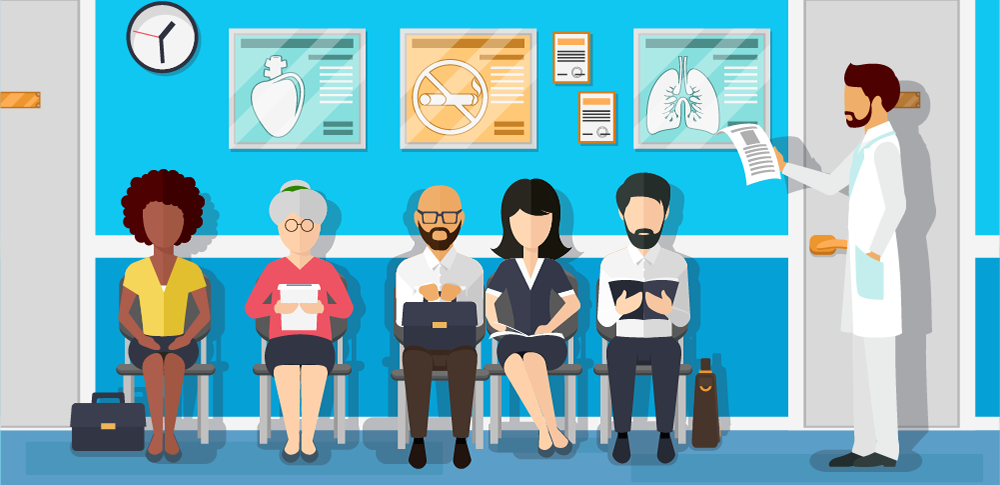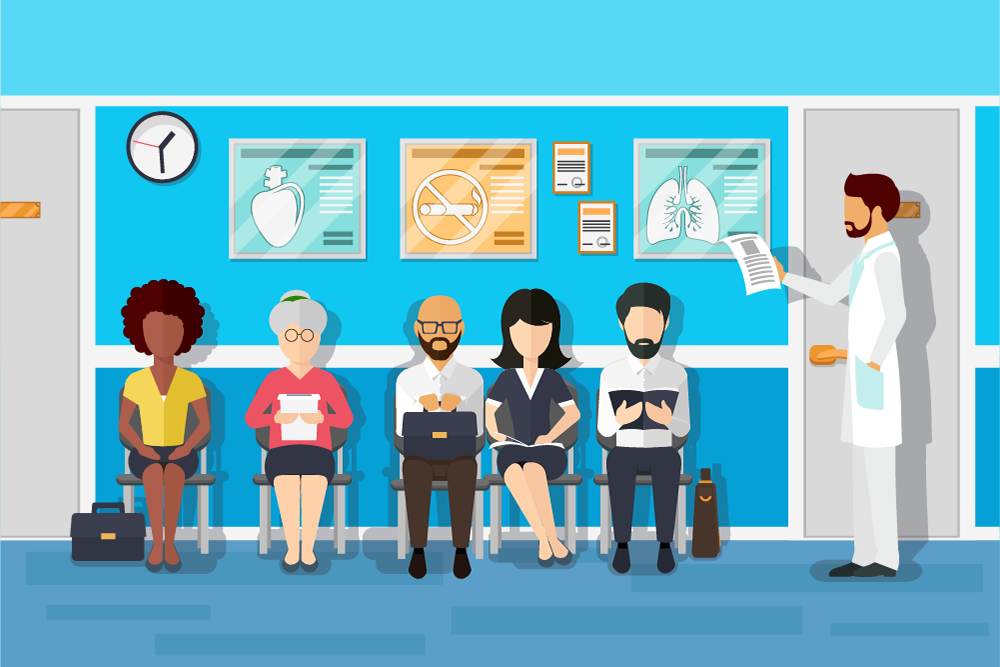
As a healthcare provider or office manager, it can be difficult to keep up with the latest marketing and communication trends. New and improved technologies seem to come out daily. So to make your life a little easier, we’ve put together this guide so you can quickly get to know one of the hottest tools for healthcare offices — digital waitboards.
What Is a Digital Waitboard?
While you may not know the term ‘digital waitboard,’ you probably have heard the term ‘digital signage.’
Digital signage is a media system that shares customized and often, branded content on a screen in a business or office. The digital signage system includes a high-definition screen along with a media player that manages and plays the content.
A digital waitboard is an application of digital signage. It’s a way to use digital signage to reduce perceived wait times and improve the experience guests have while they wait.
Why Are Digital Waitboards Valuable?
Using digital signage as a means to serve patients while they wait is a powerful tool for healthcare offices.
Digital waitboards are important because:
- Patients hate to wait. One study found that 97% of patients are frustrated by long waits.
- But they usually have to wait in healthcare offices. The national average wait time in doctor’s offices was about 19 minutes.
- Waitboards decrease a patient’s perception of their wait times. When guests are presented with digital signage in a waiting room, their wait feels up to 33% shorter.
Patients don’t like to sit and wait, but they can have a better experience while waiting when there is entertaining and engaging content present. Digital content can actually make a wait feel shorter.
Digital waitboards decrease perceived wait time. If a wait is 30 minutes, it can feel like only 20 minutes. That’s a big difference for patients and the providers who are trying to please them.
How Do I Manage a Digital Wait Board?
Digital waitboards may seem like an expensive advanced technology or overwhelming system to set up, install, and control.
But, digital waitboards are relatively easy and affordable to launch and manage.
To set up a wait board system you need to:
- Set Up Technology. Install the screen and connect it to a content management system or internet connection to receive and play media.
- Create Content. Develop slideshows, videos, and graphics to display on your screen.
- Manage Content. Create an editorial calendar that determines when to update and adjust your content playlist.
Executing these steps can be done on your own by purchasing materials and creating your own content.
Or, you can team up with a partner like Spectrio who has experts to help you find and install the equipment you need and professional writers and designers to create your content.
Who Can Benefit from Digital Waitboards?
It’s easy to see that digital waitboards are beneficial for waiting patients. But there are two other groups who also benefit from this in-office signage.
- Patient Loved Ones — When we think about waiting in a healthcare office, we tend to think of patient wait time. But there are often family members and friends that accompany their loved ones to appointments and procedures. Digital waitboards can also serve this audience and aim to release the stress and worry that family members and friends have while they wait.
- Internal Staff — Even those who don’t watch the digital waitboards can benefit from them. Because waitboards can decrease and ease anxiety and stress in both patients and their loved ones, that lower tension can benefit staff. Patients and their family and friends will be less tense, frustrated, and restless which will make jobs easier for administrators, nurses, and doctors.
Where Can You Use a Digital Waitboard?
You probably already guessed that waitboards work well in waiting rooms. But, don’t assume that the only places you can use waitboards are in patient-facing sitting areas.
Healthcare practices can also display screens in or near:
- Exam rooms. Help patients pass the time while waiting for the doctor and give them something to look at during their appointment. This works well in dental offices or facilities where patients may need to take their mind off long procedures.
- Recovery rooms. Ease the minds of patients and their loved ones by offering a subtle source of distraction in recovery rooms.
- Family waiting areas. Passing the time isn’t easy for family and friends waiting for a loved one at a healthcare office or hospital. Help them pass the time by providing entertaining and engaging content.
- Cafeterias and vending areas. Another location where family and friends often wait is in eating areas. Place screens in these areas to continue to offer helpful distractions that speed up perceived wait times.
You can place a digital screen in any area where a patient or their loved one spends time. Don’t box yourself in by thinking that waitboards only work in standard waiting rooms.
When Is It Time to Start Using Digital Waitboards?
For most health care offices, the time to start using wait boards is right now.
If you aren’t using digital screens to captivate, engage, and inform your waiting patients — you could already be falling behind your competitors that are.
Digital signage is no longer a brand new communication tool that only savvy, technologically advanced practices are embracing. It’s quickly becoming a must-have for every practice. Without it, your practice risks looking dated and out-of-touch.
Is This Right for My Practice?
If you still have questions and aren’t sure how and if digital waitboards can benefit your practice, we have additional resources to help you decide.
Download our free guide “Everything You Need to Know When Deciding If Digital Signage Is Right For Your Business.”
This guide offers additional information and walks you through the process of determining whether or not you could benefit from bringing digital signage into your practice. Use it to see if this is the best options for pleasing and engaging your patients.
